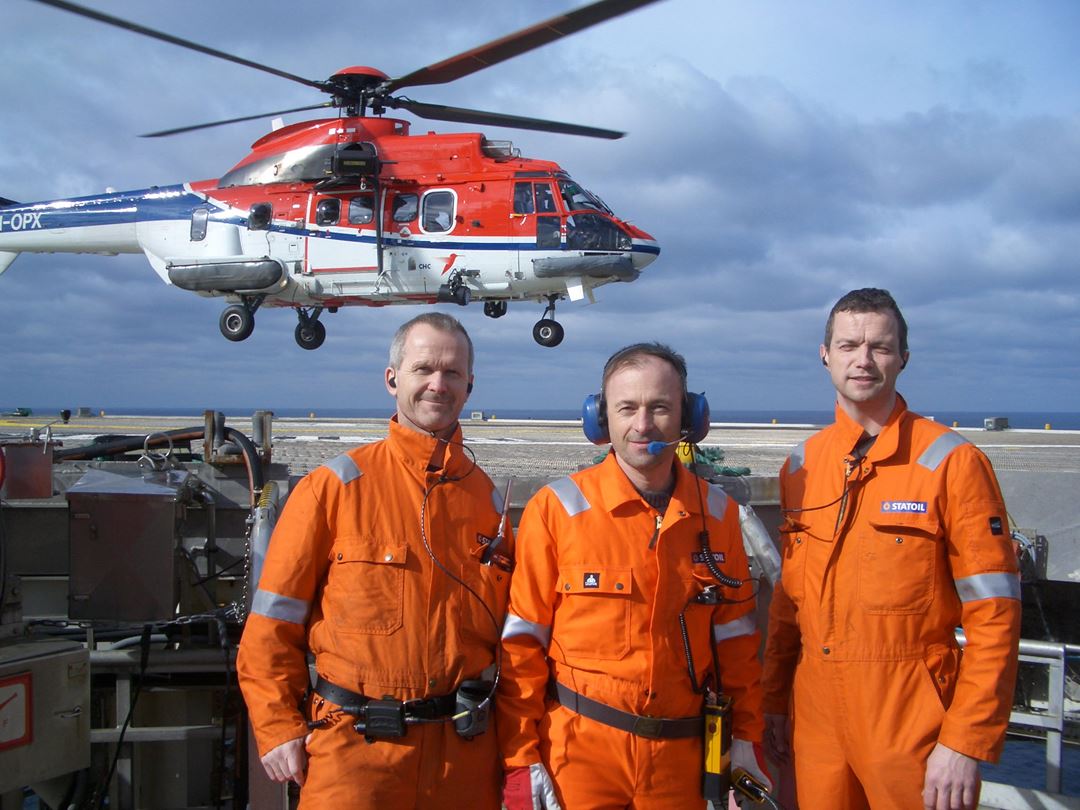This tiny device doesn’t look all that impressive, but what it can do represents a revolution in audiology. The plug is not only an advanced noise suppressant, but it also constantly monitors the wearer’s exposure to noise and warns him or her when recommended limits are exceeded. It also makes a daily check of the wearer’s hearing so that incipient damage can be picked up at an early stage before it has a chance to become serious.
There is an enormous focus on health, safety and environmental issues (HSE) in the North Sea, and as a result there are very few cases of occupational injury among platform workers. However, hearing damage is an increasing problem, and about 600 new or aggravated cases are reported to the Petroleum Safety Authority each year. Noise levels linked to activities such as flaring and helicopter transport are very high.
“This plug allows us to monitor what is going on inside the ear canal”, says acoustics researcher Olav Kvaløy at SINTEF ICT.
Avoiding background noise
The new ear plug is an advance on a plug previously developed for the armed forces, and currently supplied by Nacre AS. The development work has been carried out together with Statoil for offshore applications, but may also be relevant to workers in other occupations exposed to high noise levels. The prototype is now ready for use on oil and gas platforms.
The plug is equipped with an external microphone which picks up noise from the surroundings. The sound is processed digitally and harmful noise filtered out. It is then transmitted to the loudspeaker on the inside of the plug so that the wearer can hear what is going on in his or her surroundings. A microphone installed on the inside of the ear plug picks up speech signals through the wearer’s skull.
This makes the mouth microphones commonly used in traditional hearing protection devices superfluous. Since speech is registered within the ear canal, the wearer avoids exposure to background noise which is the case with traditional mouth microphones.
Measuring noise levels
In addition to these functions, the advanced ear plug, known as QP100Ex, makes continuous measurements of the wearer’s exposure to noise directly against the eardrum. The QP100Ex also makes daily measurements of the wearer’s hearing. The data are stored in a database. A continuous “monitoring” of this kind is entirely unique and provides wearers with a warning device which prevents them from developing damage to their hearing over time.
“Based on threshold measurements, we construct an audiogram, or hearing curve, which indicates if a hearing problem is developing”, says Odd Kr. Ø. Pettersen, Research Manager at SINTEF’s Department of Acoustics. “It’s important to obtain such information at an early stage, so that measures can be taken to avoid permanent and irreversible damage”, he says.
Three barriers
The intelligent ear plug contains three different barriers designed to prevent hearing damage. The first of these is a foam plug which seals the ear canal, combined with a seal control device which notifies the wearer if the plug is not inserted correctly. The second barrier consists of a system which notifies the wearer if recommended noise limits have been reached. If the wearer still fails to remove him/herself from exposure, the third barrier kicks in and warns the wearer that he or she is in danger of incurring hearing damage.
“Statoil has made a major contribution to the development of the system”, says Pettersen. “The company has made its wishes clear and has provided excellent input. Our team of researchers has incorporated these into our work. We have worked closely together to find solutions and it has been a fantastic and positive experience to work with Statoil”, says Pettersen.
Taking care of ethics
The data acquired by the ear plugs are stored in a database. The project is approved by the REK (Norwegian acronym for Regional Committee for Medical and Health-related Research Ethics), and there are strict requirements stipulated for the administration of the data. In spite of the fact that Statoil has set up and sponsored the project, only researchers will have access to the data, and only in anonymised form. The results released to Statoil will also be anonymised.
Just before Christmas, 40 workers on the Oseberg platform, and just as many on the Snorre B installation, started to wear the ear plug on a daily basis. The data then began to flow in, together with reports by the users of how they feel about the ear plugs.
“This device is revolutionary, and we are really looking forward to putting it to use” say SINTEF researchers Kvaløy and Pettersen. “We have high hopes that the ear plugs will result in major reductions in hearing damage”.
FACT BOX:In 1989 researchers at SINTEF’s Department of Acoustics began developing an active ear plug designed to function as a hearing protection device. The device known as QuietPro was developed in collaboration with the Norwegian and Swedish armed forces and resulted in the spin-off company Nacre. The device is waterproof, highly robust, and is used by the US Marines, among others. In 2007 Nacre was sold to the French-American group Bacou-Dalloz which today is a subsidiary of Honeywell. About QuietPro: |

